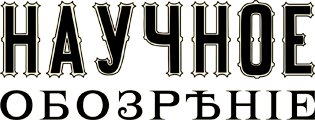Scientific journal
Scientific Review. Biological science
ISSN 2500-3399
ПИ №ФС77-57454
ISSN 2500-3399
ПИ №ФС77-57454
BIOLOGY OF FLOWERING OF GRADES SYRINGA VULGARIS L.
Zhakova S.N. 1
Novoselova L.V. 2
1 Perm state agricultural academy named after academician D. N. Pryanishnikov
2 Perm state national research university
Results of the study of flowering biology of S. vulgaris L. (not cultivar form as control) and 11 cultivars of S. vulgaris L. from the collection of siringarium of the Professor A. G. Genkel Botanical Gardens of Perm state national research University. ‘Ludwig Spath’, ‘Herr Wilhelm Pfitzer’, ‘Marie Legraye’ and ‘India’ have simple flowers. ‘Katherine Havemeyer’, ‘President Grevy’, ‘Mme Lemoine’, ‘Jules Simon’, ‘Mme Jules Finger’, ‘Paul Deschanel’, ‘Mme Abel Chatenay’ have terry flowers. Also the peculiarities of the limb of the corolla (the position and shape of the lobes of the limb of the corolla), the openness of the center of the flower (open and closed), the morphology of the inflorescence, the order of blooming flowers in them and the duration of flowering are studied. The clustering of partial inflorescences of each of the studied cultivars into three categories: basal, lateral and apical is implemented. Homogeneous of all categories for ‘Marie Legraye’ and ‘Paul Deschanel’, uniformity of lateral inflorescences for ‘India’ are identified. Cultivars ‘Jules Simon’ and ‘Paul Deschanel’ revealed divergent type of blooming, S. vulgaris (not cultivar) and other cultivars are characterized with acropetally type. The duration of flowering of one inflorescence for different cultivars ranges from 10 to 20 days. Cultivars with terry form of the flowers are long blooming, with longer passing through the stages prior to the opening of a flower, a smaller proportion of open flowers per inflorescence. The highest life expectancy of an open flower is shown for ‘Herr Wilhelm Pfitzer’ – 10±0,2 days; the shortest – for ‘Paul Deschanel’, 2,1±0,2 days. Seasonal and diurnal variation of flowering is studied. For most cultivars typical morning type of dehiscence is shown, the largest proportion of open flowers was found at 8 o’clock in the morning. Despite entomophility of lilac flowers, only occasional attendance of plants by insects is marked. Pollinators are Apis mellifera L., Bombus hortorum L., visitor Cetonia aurata L.65 66


 science-review.ru
science-review.ru